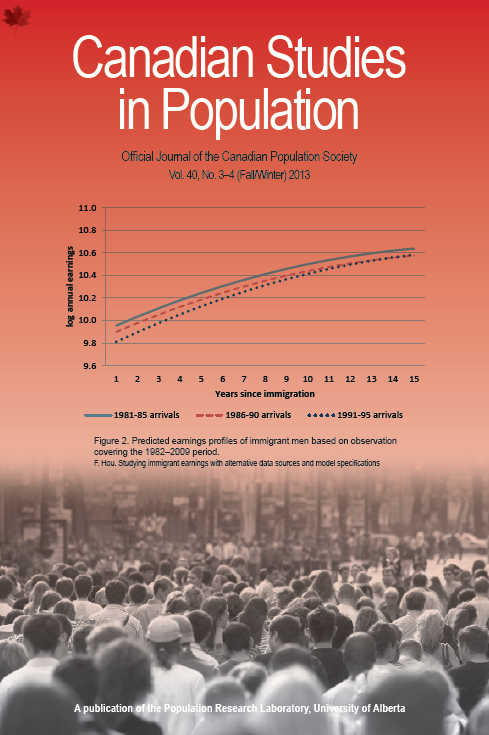The age pattern of retirement: Comparisons of longitudinal, pseudo-cohort, and period measures
DOI:
https://doi.org/10.25336/P6JS5SKeywords:
Retirement patterns, longitudinal measures of retirement, pseudo-cohort measures of retirement, age-retirement patternsAbstract
Retirement patterns change. When that happens, measures based on single-period cross-sectional data may provide a misleading picture of cohort retirement behaviour. We offer two cohort-based measures. One draws on income tax records to follow actual cohorts of individuals over time, the other on a time-series of cross-sectional surveys. We find that the retirement patterns based on the two approaches are similar but differ, often substantially, from single-period patterns. While pseudo-cohort measures can be assessed more quickly and at lower cost, knowledge of differences across income groups, income replacement rates, and so on, must rely on full longitudinal records.
Downloads
Published
Issue
Section
License
Copyright (c) 2019 Frank T. Denton, Ross Finnie, Byron G. Spencer

This work is licensed under a Creative Commons Attribution 4.0 International License.
The following copyright statement applies to content published in Volumes 1 - 45 of Canadian Studies in Population.
Authors retain copyright and grant the journal right of first publication with the work simultaneously licensed under a Creative Commons Attribution License that allows others to share the work with an acknowledgement of the work's authorship and initial publication in this journal.
Authors are able to enter into separate, additional contractual arrangements for the non-exclusive distribution of the journal's published version of the work (e.g., post it to an institutional repository or publish it in a book), with an acknowledgement of its initial publication in this journal.
Authors are permitted and encouraged to post their work online (e.g., in institutional repositories or on their website) prior to and during the submission process, as it can lead to productive exchanges, as well as earlier and greater citation of published work (See The Effect of Open Access).



